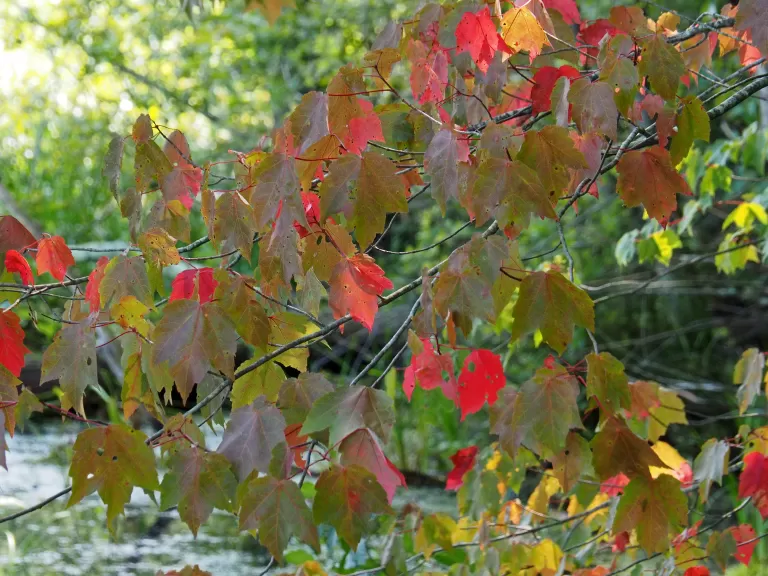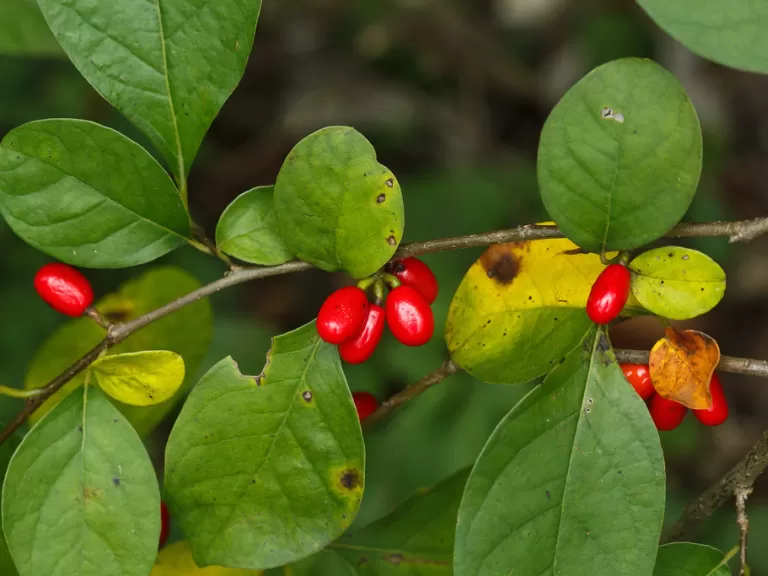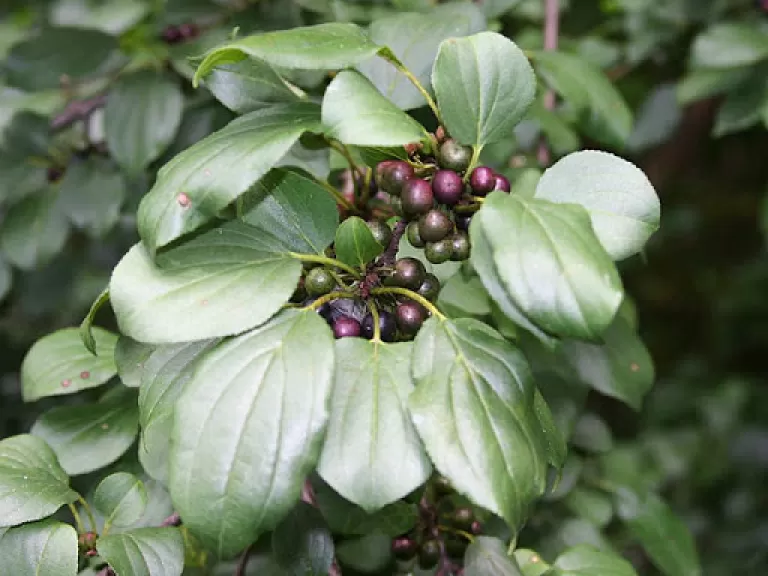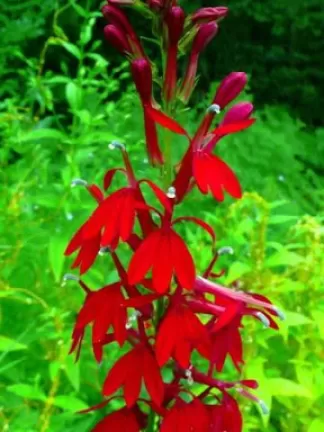Wolbach Farm Interpretive Trail, Post 4

Red Maples
The area surrounding the inner loop trail is called a red maple swamp and is a perched wetland. Red maple (Acer rubrum), which is found in abundance in this area, is adaptable and capable of growing in many different conditions. Also referred to as "swamp maple" due to its tendency to grow in wet swampy environments, the red maple is an important plant along riparian buffers. Although it is one of the most prevalent trees in the northeast, it is susceptible to disease and defects, so its timber quality is low.
Photo: Red maple leaves, photographed by Joan Chasan.

Spicebush
The middle of the swamp is densely populated with thickets of spicebush (Lindera benzoin), a deciduous native shrub that blooms in early spring with greenish, yellow flowers.
Many birds and animals rely on this shrub's berries and foliage for food. It is also an essential habitat for the spicebush swallowtail butterfly, which will lay its eggs only in spicebush or other members of the laurel family. Additionally, early land surveyors used this plant as a sign of quality agricultural land because of its tendency to be found in rich woodland soil.
Photo: Spicebush (Lindera benzoin), photographed by Tom Potterfield.

European Buckthorn
Another shrub that can be found in the red maple swamp and surrounding area is European buckthorn (Rhamnus cathartica), an ornamental shrub that was brought over from Europe. Since its introduction to America, it has become invasive and has a tendency to overrun native understory plants and form dense thickets. Its pervasiveness is aided by its ability to regenerate after cutting or burning.
Photo: European buckthorn (Rhamnus cathartica).

Cardinal Flower
A wildflower that you might see in this area is cardinal flower (Lobelia cardinalis), an herbaceous perennial that is found in wet meadows, stream corridors, and perched wetlands. It has showy red flowers named after the bright red robes of Catholic Cardinals.
The flowers themselves have long trumpet style petals that are too deep for pollinating insects, making this a favorite plant for hummingbirds who have long beaks that can reach inside for the cardinal flower’s sweet nectar.
Photo: Cardinal flowers, photographed by Dawn Dentzer.
Note that the next stop is on the Inner Loop Trail. Turn right at the intersection just after the bridge.
Back to Wolbach Farm Interpretive Trail main page.